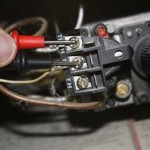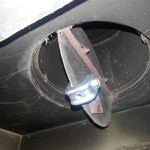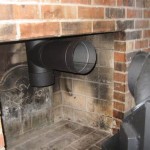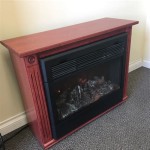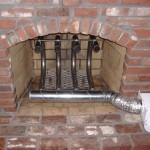Understanding the Gas Fireplace Igniter: Function, Types, and Troubleshooting
The gas fireplace igniter is a critical component responsible for initiating the combustion process, transforming the potential energy of natural gas or propane into radiant heat. Its reliable operation is essential for the convenience and safety that gas fireplaces offer. A malfunctioning igniter renders the fireplace unusable, requiring understanding of its function, the types available, and common troubleshooting techniques to restore its operation.
The fundamental role of the gas fireplace igniter is to create a spark or heat source sufficient to ignite the gas flowing into the burner assembly. This spark or heat overcomes the activation energy required for the combustion reaction, initiating a controlled and sustained burn. Without a functioning igniter, raw gas would accumulate, posing a significant safety hazard. Therefore, a properly working igniter is not merely a convenience; it is a vital safety feature.
Types of Gas Fireplace Igniters
Gas fireplace igniters are not a monolithic component; several distinct types exist, each with its own operating principle and advantages. The most common types include: Piezo igniters, spark igniters, and hot surface igniters.
Piezo igniters rely on the piezoelectric effect, which generates a high-voltage spark when a mechanical stress is applied to certain crystalline materials, typically quartz or ceramic. In a piezo igniter, a button or lever is pressed, which rapidly compresses the piezoelectric crystal, generating a spark at the igniter tip located near the burner. Piezo igniters are simple, reliable, and do not require an external power source, making them suitable for many basic gas fireplaces. Their main disadvantage is the relatively weak spark they produce, which may be insufficient to ignite the gas under certain conditions, such as high humidity or variations in gas pressure. Regular cleaning of the igniter tip is often required to remove any buildup that could impede the spark.
Spark igniters employ a more sophisticated electronic circuit to generate a higher-energy spark. These systems typically use a transformer or capacitor discharge circuit to amplify a low-voltage input into a high-voltage output delivered to the igniter electrode. The resulting spark is significantly stronger and more reliable than that produced by a piezo igniter. Spark igniters require a power source, either batteries or a connection to the household electrical system. The increased spark energy allows them to function more consistently under a wider range of environmental conditions. Modern spark igniters often incorporate safety features such as flame rectification, which monitors the presence of a flame and automatically shuts off the gas supply if the flame is extinguished. This type of igniter is commonly found in gas fireplaces with more advanced control systems and safety features.
Hot surface igniters (HSI) represent a different approach to gas ignition. Instead of generating a spark, they heat a high-resistance element to a very high temperature, typically glowing red or orange. When gas flows past the hot surface, it ignites due to the intense heat. HSI systems are highly reliable and generally faster than spark igniters. They also tend to be more energy-efficient, as they only draw power during the ignition phase. The heating element is usually made of silicon carbide or other high-temperature ceramic material. One potential disadvantage is the fragility of the heating element, which can be susceptible to damage from physical impact or thermal stress. HSI systems are often found in higher-end gas fireplaces and furnaces due to their reliability and efficiency.
Common Problems and Troubleshooting
Even with proper maintenance, gas fireplace igniters can experience problems that prevent them from functioning correctly. Diagnosing and addressing these issues is essential for restoring the fireplace to proper operation.
One of the most common problems is a dirty or obstructed igniter tip. Dust, soot, and other debris can accumulate on the igniter tip, hindering the spark or heat from reaching the gas. This is particularly common with piezo igniters, which produce a relatively weak spark. Regular cleaning of the igniter tip with a small brush or emery cloth can often resolve this issue. If cleaning does not restore the igniter's function, it may be necessary to replace the igniter entirely.
Another potential problem is a faulty igniter module or electrode. With spark igniters, the electronic module responsible for generating the high-voltage spark can fail due to age, corrosion, or electrical surges. Symptoms of a faulty module include a weak or non-existent spark, or intermittent ignition. The electrode, which is the metal rod that delivers the spark to the gas, can also become corroded or damaged, preventing it from conducting the spark effectively. Inspecting the module and electrode for signs of damage or corrosion is essential. Replacing the faulty module or electrode is often the solution.
For hot surface igniters, the most common issue is a broken or cracked heating element. The heating element is fragile and can be damaged by physical impact or repeated thermal stress. A visual inspection of the heating element will usually reveal any cracks or breaks. A multimeter can also be used to test the continuity of the heating element; a reading of infinite resistance indicates a broken element. Replacement of the heating element is necessary to restore the igniter's function.
Gas supply issues can also mimic the symptoms of a faulty igniter. If the gas pressure is too low or the gas valve is not opening properly, insufficient gas will reach the burner, making it difficult to ignite. Check the gas supply line for kinks or obstructions, and ensure that the gas valve is fully open. If the problem persists, it may be necessary to have a qualified technician inspect the gas pressure and valve operation.
Wiring problems, such as loose connections or corroded wires, can also prevent the igniter from functioning correctly. Inspect all wiring connections associated with the igniter, ensuring that they are secure and free from corrosion. Use a wire brush to clean any corroded connections, and tighten any loose connections with a screwdriver or pliers. If the wiring is damaged, it may need to be replaced.
Maintenance and Safety Considerations
Regular maintenance is crucial for ensuring the reliable and safe operation of a gas fireplace igniter. Proper maintenance can prevent many common problems and extend the lifespan of the igniter.
Periodic cleaning of the fireplace and its components is essential. Dust, soot, and other debris can accumulate on the igniter, burner, and surrounding areas, hindering their performance. Vacuuming the fireplace interior and cleaning the igniter tip with a soft brush can help prevent these problems. The frequency of cleaning will depend on the usage of the fireplace and the amount of dust and debris in the environment.
Annual professional inspection and servicing is highly recommended. A qualified technician can thoroughly inspect the fireplace, including the igniter, burner, gas valve, and venting system, to identify any potential problems before they become serious. The technician can also perform necessary maintenance, such as cleaning, lubrication, and adjustment, to ensure that the fireplace is operating safely and efficiently.
Always follow safety precautions when working on a gas fireplace. Before performing any maintenance or troubleshooting, turn off the gas supply to the fireplace and allow it to cool completely. Disconnect the electrical power supply to the fireplace to prevent electric shock. Wear appropriate safety gear, such as gloves and eye protection, to protect yourself from injury. If you are not comfortable working on the fireplace yourself, it is always best to call a qualified technician.
Understanding the function, types, and troubleshooting techniques of a gas fireplace igniter is essential for maintaining the safety and convenience of gas fireplace operation. By implementing regular maintenance practices and addressing problems promptly, homeowners can ensure that their gas fireplace igniter functions reliably for years to come.

Lulshou Piezo Spark Igniter Push On Gas Fireplace Stove Heater Com

Identifying Gas Fireplace Parts Www Mygasfireplacerepair Com

Piezo Igniter 2 Set Gas Grill Push On Ignition Spark Lighter Barbecue For Fireplace Camping Stove Bbq Oven Patio Heater With 39 Wire Com

2 Spark Igniter Ignitor Push On Kit Gas Fireplace Grill Bbq Stove

Electronic Ignition

Electronic Ignition Gas Fireplace Valve Kit Firepit Outfitter Fire Pit

Gas Fireplace Won T Stay Lit Magic Touch Mechanical

Ceramic Igniter Gas Grill For Fireplace Camping Stove Oven Newegg Com

Universal Push On Igniter Kit 660 0001 The Home Depot

Piezo Igniter With Spark Ignition Electrode Gas Fireplace Oven Heater
Related Posts

